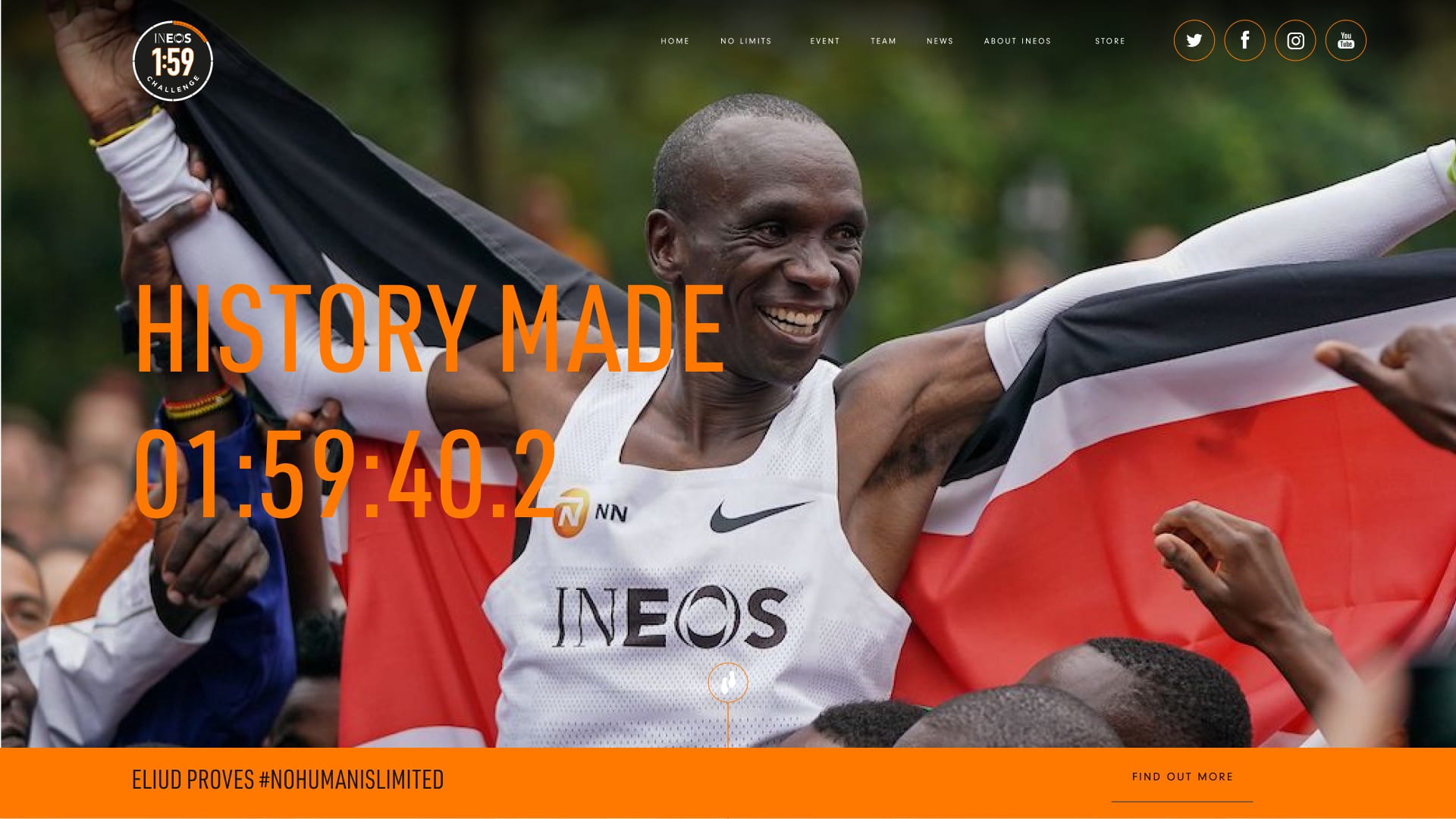
SOON_
INEOS 1:59
INEOS 1:59
Challenge
Sports /
Nominee
SOON_
Sports
Nominee
Because the project was so fluid, decisions were being made completely on the fly and we had to be equally fluid. The project was one of the purest, agile projects we've run.- SOON_ Team


Q: Talk about your initial prototypes. How did those ideas change throughout design and execution?
A: Pencil sketches on pieces of paper, to get initial ideas out. The project was completely iterative so for sure - they changed!
Q: What influenced your chosen technical approach, and how did it go beyond past methods?
A: Because the project was so fluid, decisions were being made completely on the fly and we had to be equally fluid. The project was one of the purest, agile projects we've run. Even for products like the Second Screen webapp that supported the live broadcast with rich, realtime content, we needed to approach it dynamically, prototyping and demoing to clients at speed while perpetually testing to ensure it would stand up to a high density of traffic. The infrastructure and application were iterated on in parallel. That tight coupling really helped so we knew the Google Cloud infrastructure / Kubernetes orchestration would behave very predictably.
Q: What web technologies, tools, or resources did you use to develop this?
A: Main site: Django, Cloudinary, HTML5, Google cloud platform with dynamic horizontal scaling for spiky traffic loads, Memcached for lighting fast app response times, VSCode 😜, Design tech, Sketch, Abstract, Second Screen, React, Firestore realtime DB, HTML 5, React admin for mobile CMSWhat breakthrough or “a-ha” moment did you experience when concepting or executing this project?
There were so many factors contributing to success that went beyond a guy running round a track really fast. Peeling back those layers–like using CFD and Mercedes AMG's wind tunnel to optimize the pattern of pacing runners was fascinating, explaining hyper complex technical challenges while still making it accessible. Also, the opportunity to support the live broadcast via a digital "second screen" experience. It was thrilling to be part of the effort on the day...in a world where we spend so much time forward planning to minimize risk, it's exciting to do something that 100% has to be right on the day and working with the broadcast team at Sunset + Vine was a treat.

